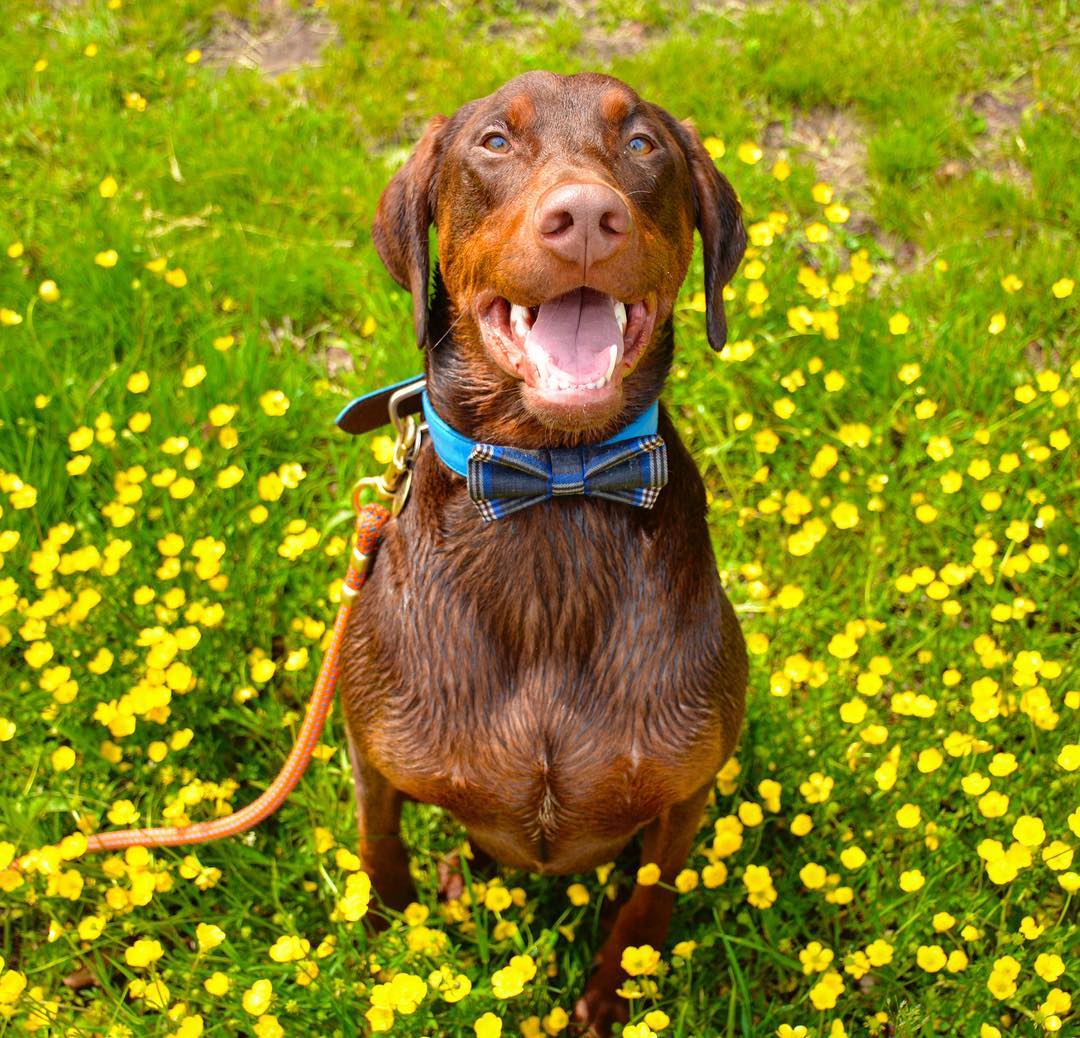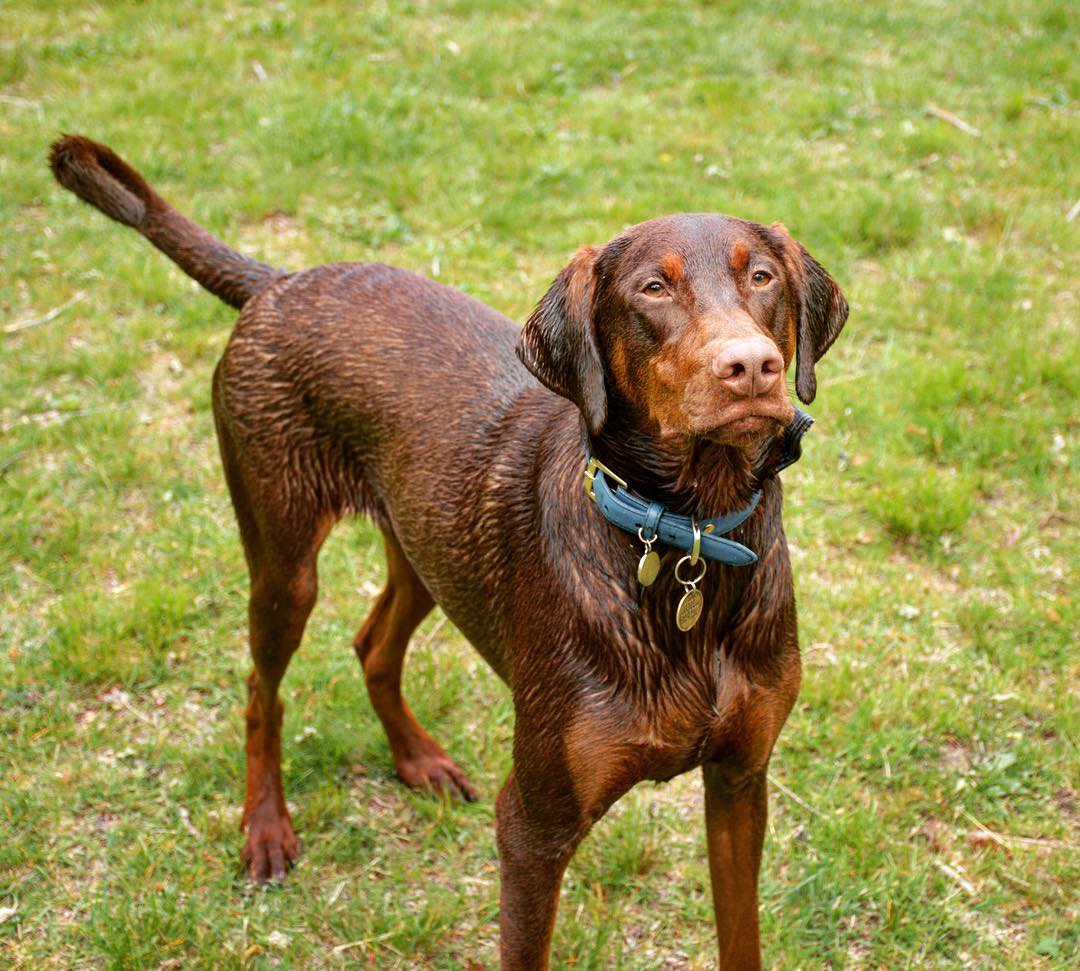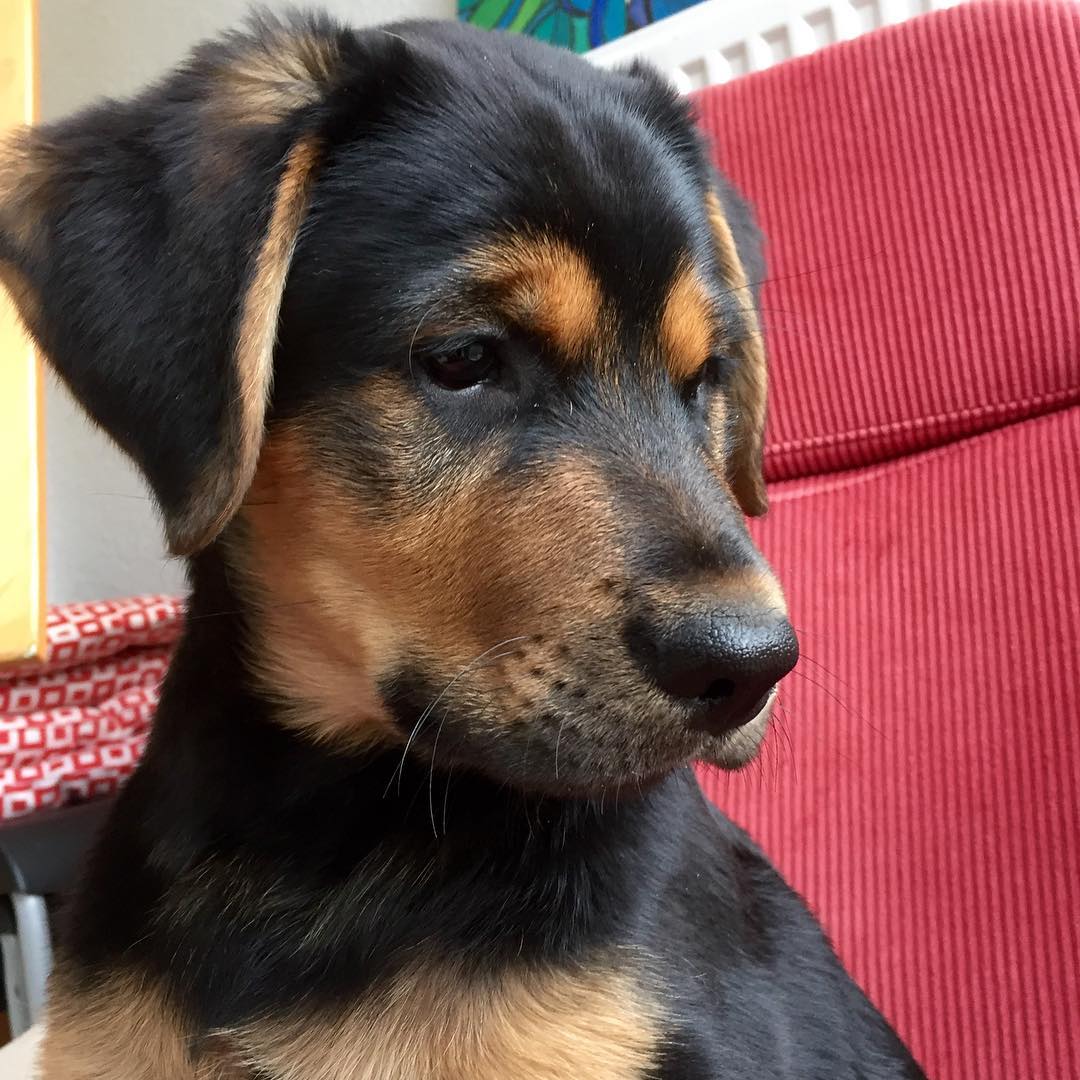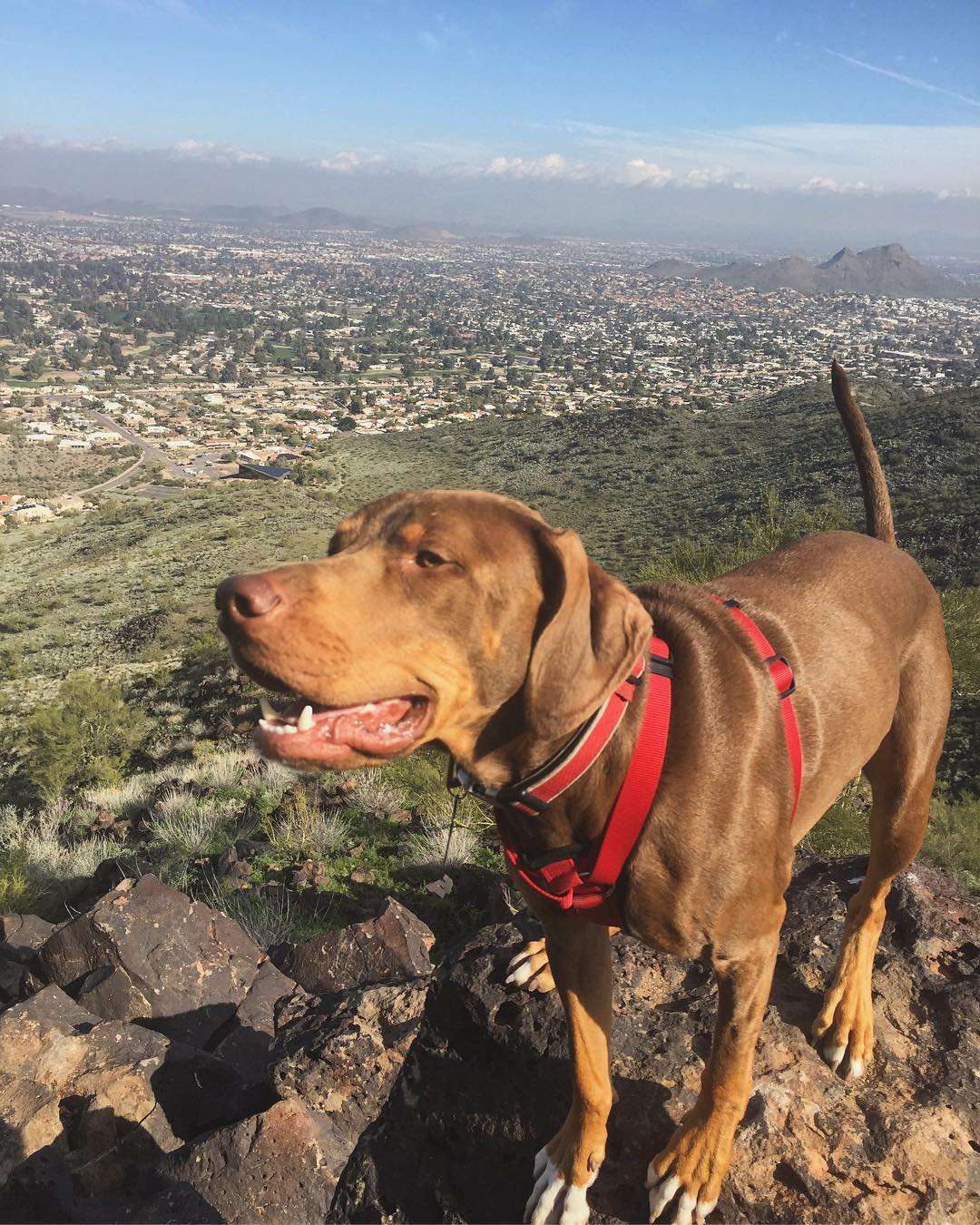Love the look of a Doberman and the personality of the Labrador? Are you hoping for a dog who is loyal and loving? Then you might consider a Doberdor puppy.
Let’s take a look at what to expect from this increasingly popular crossbreed.
Today the concept of designer dogs is known and accepted.
But where some designer dogs are so popular, they are almost household names (Cockapoo, Labradoodle, Puggle), others are still catching up.
The Doberdor is one such hybrid dog.
These are two very different breeds when it comes to their temperament. It is therefore important that you understand both before choosing a Doberman Lab mix as your new dog.
Origin of the Doberman Lab mix
Little is known about the origins of the Doberman Lab mix, a hybrid dog breed often referred to simply as the “Doberdor”.
But there is a lot we can learn about the Doberman Lab mix’s potential to make wonderful family companions when we study this dog’s universally popular purebred parents, the Doberman Pinscher and Labrador Retriever!
- The Doberman
Interestingly enough, like the Dobredor, the purebred Doberman breed also has somewhat mysterious origins.
It is clear that this dog breed first appeared around 1890 with a Mr. Karl Friedrich Louis Dobermann.
The story goes that Mr. Doberman needed a guard dog to keep him safe while he worked (although his real use is equally mysterious: “tax collector” and “night watchman” are two favorite appraisals).
Mr. Doberman didn’t live long enough to see him, but his German comrades named the new breed “Doberman Dog” in his honor.
Breeding efforts shifted over time from producing a violent and unpredictable military and a police dog to selecting traits for loyalty, protection, and trustworthiness.
This shift resulted in the Doberman breed taking its place as one of the most popular large breed family breeds. She is currently listed as number 15 on the AKC’s most popular list of large dog breeds.
- The Labrador Retriever
The Labrador Retriever has been the most popular purebred dog breed in the nation for a while.
These furry, kind, loyal, and loving large breed dogs are very popular pets and workers.
The lab is originally from Newfoundland, Canada, which explains the thick, warm, waterproof coats of this purebred dog and the general love for the water.
James Smith and Walter Scott, both aristocrats with an enthusiasm for the hunt, are credited with the early breeding efforts that resulted in the purebred dog we now call the “Labrador Retriever”.
Originally bred to do exactly what their name suggests – retrieval – these dogs have been continuously bred to enhance these traits and produce a dog that is intense and loyal to humans.
Early Labs were always black, but today the yellow lab and chocolate lab have joined the black lab in the thoroughbred lineup.
So what happens when you mix these two historically very different personalities together?
Doberdor temperament
The Purebred Doberman Dog and the Purebred Labrador Retriever Dog are strikingly similar in some ways. And incredibly different from others.
Both purebred dogs are known to be affectionate, loyal, and close. They are also affectionate, athletic, and energetic towards their owners. Not to mention intelligent and trainable.
So you can expect your Doberman Lab mix to show these traits as it grows.
However, they also have a significant difference.
Doberdor personality
The Doberman Pinscher is very protective and has a guarding nature. Laboratories are the exact opposite. I am happy to welcome everyone, from friends to burglars, to my apartment with open arms.
If the two of you cross, there is no way you can tell if your pup is a social bunny or a bit introverted.
The importance of early and ongoing training and socialization in developing these traits cannot be underestimated
You don’t know if your Doberman Lab mix has this waking instinct, so thorough socialization is crucial in both cases.
Make sure you have lots of visitors, adults, and children from the day your puppy comes home. Take them to a number of places, with crowds and strangers.
Socialization is the key
In fact, I cannot emphasize enough how important this is, even in a mixed race. Because there is simply no way of guessing which property is being expressed.
However, if the consistency and discipline of training and socialization are not in place, then all of the risks inherent in both purebred parent breeds can manifest themselves in a Doberman Cross Labrador puppy as well.
Lack of education and socialization leads to aggression, inability to distinguish enemy from the enemy, destructiveness, willful disobedience, separation anxiety, and other undesirable behavior problems.
If you are bringing home a vigilant dog it is important to keep this in mind. Even if one parent doesn’t.
It is also important to meet the Doberman parents to make sure they are not averse to strangers.
A Doberman Pinscher won’t jump over you and shower you with love the first time you meet, but he should be perfectly comfortable with your company.
Doberman Lab Mix Training
Dobermans and their mixes only need to be trained with positive reinforcement techniques due to their protective nature.
The reward-based nature of these brings out the best.
Punishing a potentially aggressive dog is dangerous as it can mask signs of anger that the dog would otherwise use to show you that they are unhappy.
You can find out all about the end of dominance use in this article on Alpha Dog Theory.
Doberman Lab mix appearance
Doberman Lab mixes vary widely.
Your pup could have the lab’s long, water-friendly tail. Or it could have the Doberman’s shorter triangular tail. The very short tail in adult Dobermans is always a result of docking in puppyhood.
When it comes to ears, you can expect longer, floppy ears to predominate in any Doberman Lab mix. Since both the Doberman and Labrador purebred breeds naturally have this type of ear.
The Doberman’s erect ears are always a result of harvesting, a controversial procedure that is carried out in puppyhood.
In terms of size, you can be pretty sure that your pup will weigh anywhere between 50 and 80 pounds and stand between 21 and 27 inches tall at the shoulder, with the males being taller than the females in most cases.
Labrador Doberman Coat
One area where the Doberman and Lab mixed puppies still differ greatly is looks, especially when it comes to the Doberador coat.
A thoroughbred Doberman has a short, neat, smooth coat that sheds very little and only needs regular brushing for grooming.
A purebred Labrador Retriever, on the other hand, could well be called a dropping machine.
Their coats are medium to long, double-ply, and thick, and feel oily to the touch because of the waterproof coating on each hair. Their coats need regular grooming and brushing just to keep them under control, let alone clean.
This means that a Doberman Labrador puppy could jump out with any combination of the parents’ fur attributes. A Doberdor puppy might have short but shaggy fur, long but thin fur, non-greasy or slightly greasy hair, non-shed or shed fur.
Doberdor puppies can also vary a lot in color. Doberman coat colors range from the traditional show color black/tan to blue, yellow, white, and even red.
Labradors have three coat colors: black, chocolate, and yellow. So here all you have to do is wait and see what coloration the genetic melting pot creates in your Doberdor pup!
Doberdor grooming and shedding
Because of the huge difference in coat types between a purebred Doberman and a purebred Labrador Retriever, there is no reliable way to predict in advance what type of grooming your Doberman Lab Cross puppy will need.
As mentioned in the previous section here, your Doberdor puppy’s coat could range from a short, sleek, and almost hairless pup to a shaggy, serious offshoot.
You will likely have to wait for your black, yellow, or chocolate Lab Doberman puppy to shed its puppy coat and the adult coat will begin to grow before you can determine what level of grooming and grooming you are at.
If your pup inherits more coat traits from the Doberman side, expect twice-monthly brushing and very little tipping all year round.
However, if your pup is taking on the Labrador side (regardless of coat color), it would be wise to invest in a lint roller, several grooming tools, and at least quarterly professional grooming sessions, as well as bi-weekly brushing applications twice a day in the big shed every day!
Doberdor Health
There is no breed of dog on the planet that is perfectly healthy. It’s just not possible.
Most purebred dog breeds, however, tend to develop certain “known” (genetic/heritable) health problems, often as a result of breeding certain traits at the expense of others.
Both Dobermans and Labrador Retrievers have their own unique health problems.
This means that there is really no way to predict what health problems your Labrador Doberman puppy may inherit.
For this reason, it is important that you are aware of each parent’s race-specific inherited health conditions. This is how you can watch for signs of these health problems and do genetic testing to make sure you are picking the healthiest Doberman Lab puppy.
Doberman Pinscher health problems
Genetic testing can identify some of these problems in the higher-level system. The breeder should have the heart (heart), vision, hip, and general DNA tests with the Doberman parent prior to mating.
The main health problems that can occur in Doberman dogs are:
- Heart disease (cardiomyopathy).
- Cervical vertebral instability (CVI or wobbler syndrome).
- Canine Hip Dysplasia.
- Bone cancer (osteosarcoma).
- Mange (demodicosis).
- Canine Hemophilia (Von Willebrand Disease or CWD).
- Twisted stomach (twisted stomach).
- Daytime sleepiness caused by the nervous system (narcolepsy).
- Hypothyroidism
- Loss of vision (progressive retinal atrophy, or PRA).
Labrador health problems
Again, parent genetic testing can be your friend in choosing a Doberman and Labrador puppy.
Your breeder should have hip, elbow, eye, and general genetic tests are done for the parent of the lab.
Common problems in labs are:
- Canine Hip Dysplasia (CHD).
- Elbow / hip dysplasia (osteochondritis dissecans).
- Obesity.
- Patella dislocation (patellar dislocation).
- Irregular growth of eyelashes (distichiasis).
- Inverted / folded eyelid (entropion).
- Loss of vision (central progressive retinal atrophy, or CPRA).
- Heart valve malformation (tricuspid valve dysplasia).
- Diabetes.
- Muscular dystrophy.
- Hypothyroidism
- Skin changes (acute wet dermatitis or hot spots).
- Cataracts.
- Exercise-induced collapse (EIC).
Doberman Lab Mix health test
If after looking through these long lists of breed-specific genetic health problems you feel a little (or a lot) discouraged, this is perfectly normal.
However, you can reduce many of the risks by choosing a puppy from health-screened parents.
The Doberman Pinscher parents should have good hip scores, be PRA clear, and have recently had a clear eye test. There should also be no family history of heart disease.
The Labrador parent should have good hip and elbow scores, be PRA clear, and have recently had a clear eye test.
Doberman Lab mix life expectancy
Unfortunately, purebred Doberman dogs are short-lived even for a large breed of dog.
Many Dobermans don’t even see 10 years, which is why the Doberman Pinscher Club of America issues Dobermans who meet breed standards and are at least 10 years old with a Certificate of Longevity.
Labradors, on the other hand, can live up to 14 years old, although 12.5 years is more the norm.
Because of this, your Doberdor puppy can live anywhere between 10 and 14 years. Only genetic testing at puppy age and a thorough parenting health review can help predict which end of the spectrum a given Doberman Pinscher Lab puppy will crash.
Doberman Lab mix puppies
Black, yellow, and tan or chocolate Lab Doberman puppies have one thing in common: extreme cuteness.
Before you let yourself be dazzled by the cuteness of the puppies, it is as important for your puppies as it is for your own to pause for a moment and carefully consider your selection criteria.
Today, veterinarians can perform a variety of diagnostic and genetic studies and tests to predict whether a dog’s puppies may later develop hereditary health conditions. Some of these health conditions are quite severe and expensive to treat. In some cases, hereditary health conditions are life-threatening or fatal.
To save yourself and every puppy you bring into your life from the pain and expense of having a serious health issue, you must stop now and promise yourself that you will do your genetic homework before then Sign up for a Doberdor Puppy!
Make sure you get your veterinarian’s help to make sure that the puppy you want has the healthiest, brightest life possible with you!
If necessary, you can use the CHIC Breeding Database to review information a breeder is offering, learn about a Doberman Lab mixed doll parent, and learn about new and emerging breed-related health issues.
Doberman Labrador breeder
Choosing a Doberman Labrador breeder is not an exact science. It’s part of the research and part of the relationship. For general purposes, look for the following traits in any breeder you consider:
- Voluntarily releases all information on health and genetic tests for parent dogs.
- Allows you to meet and spend time with both parent dogs.
- Gives you an initial healthy puppy guarantee (usually for six to twelve months).
- Provides proof of parents’ family trees.
- Verifies all required vaccinations against parents and puppies.
- Will not release a puppy at least 8 weeks of age to ensure adequate socialization.
- Full cooperation in answering all of your questions, providing customer references and proof of breeding proof.
- Offers to take the puppy back if it doesn’t work out.
Doberman x Labrador Rescue
While most breeder-raised Doberman x Labrador puppies will be returned to the original breeder if the new starting point doesn’t work out, there may be times when a Doberdor goes to a shelter instead.
Here, it’s a good idea to contact the local animal shelters and ask for notification when a Doberman Lab mix dog is abandoned so you can have first-time adoption rights.
Be aware, however, that a dog that looks like a Doberman Lab mix doesn’t necessarily mean that they’re a pure hybrid. The only way you can check this is to do your own genetic testing.
Sometimes a rescue organization also funds genetic testing to check the status of purebred or hybrid breeds. This is usually done to make it easier to put a rescued puppy of desirable parentage in a good home.
Is a Doberman Lab Mix Right For Me?
After you’ve taken the time to learn about the popular hybrid dog breed affectionately known as the “Doberdor,” you can move forward with your search for a puppy with greater knowledge and confidence.
Remember, having a puppy from health-screened parents is important for every dog. This is where both parents meet, especially if you are a guard breed.
Doberman Lab mixes are large dogs. You could therefore have difficulty in homes with very young children because they are accidentally bumped into. Especially with these lively Lab genes!
They need a lot of attention, training and socialization are vital. As well as the community for much of the day.
If you think you can provide all of that, a Doberman Lab mix just might be your new best friend.








